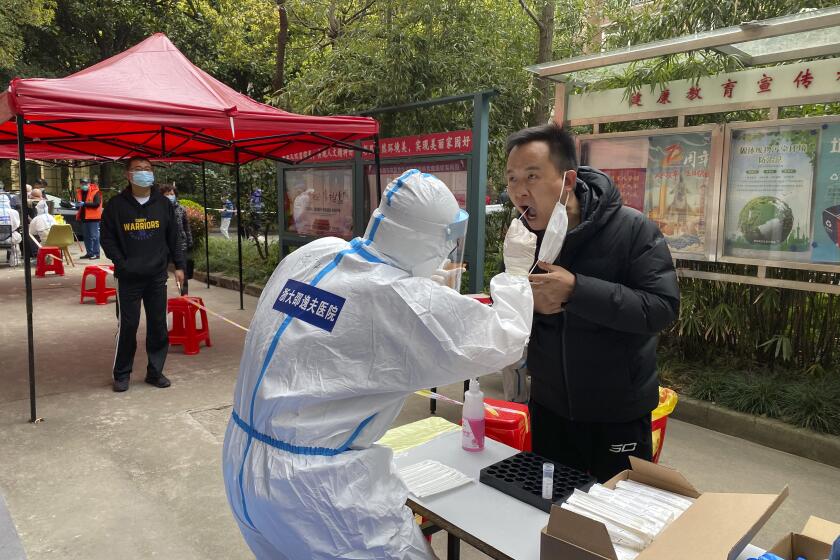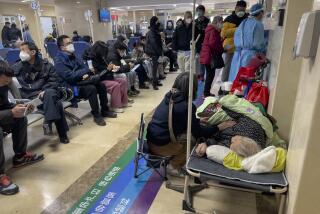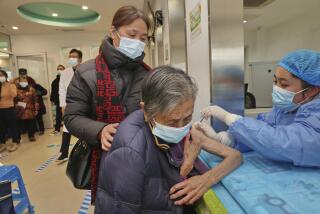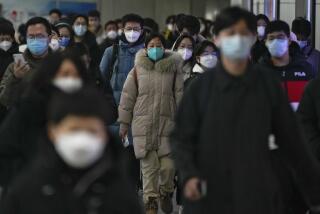Joining Shanghai, parts of Beijing go into lockdown as coronavirus cases mount
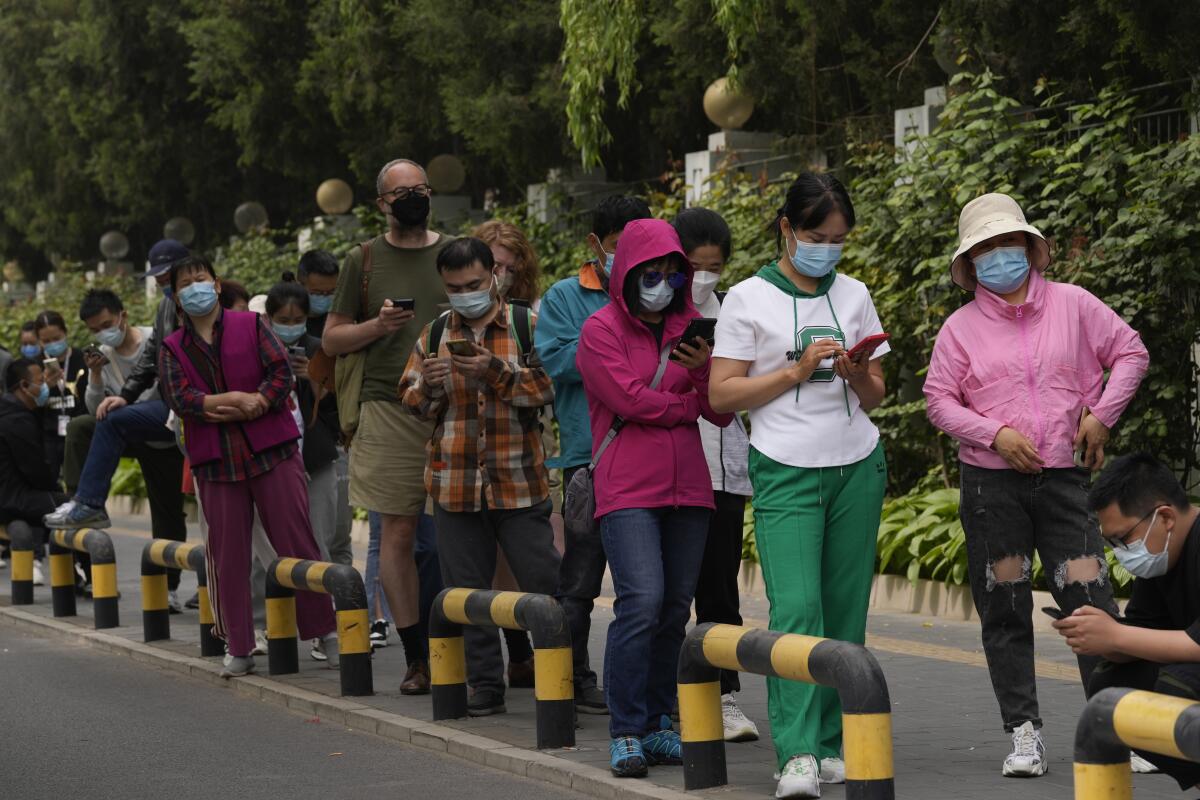
- Share via
BEIJING — China’s capital city began mass coronavirus testing of more than 3 million people Monday and restricted residents in one part of the city to their compounds, sparking worries of a wider Shanghai-style lockdown amid a new COVID-19 outbreak.
While only 70 cases have been found so far Beijing — a city of more than 21 million people — since the new outbreak surfaced Friday, authorities have rolled out strict measures under China’s “zero-tolerance” COVID strategy to try to prevent a further spread of the virus.
Some residents worked from home, and many stocked up on food as a safeguard against the possibility that they could be confined indoors, as has happened in multiple cities, including the financial hub of Shanghai. The cities of Anyang in central China and Dandong on the border with North Korea also started lockdowns as the Omicron variant spreads across the vast country.
Shanghai, which has been locked down for more than two weeks, reported more than 19,000 new infections and 51 deaths in the latest 24-hour period, pushing the official death toll from its current outbreak to 138.
Long lines formed in supermarkets in central Beijing. Shoppers snapped up rice, noodles, vegetables and other food items, while store workers hastily restocked some empty shelves. State media issued reports saying supplies remained plentiful in Beijing despite the buying surge.
Shoppers appeared concerned but not yet panicked. One woman, carrying two bags of vegetables, eggs and frozen dumplings, said she was buying a little more than usual. A man said he wasn’t worried but was just being cautious since he has a 2-year-old daughter.
China’s leaders are trying to fine-tune their ‘zero-tolerance’ COVID-19 strategy in order to minimize job losses and other costs to the economy.
Beijing health officials said 29 more cases had been identified in the 24 hours through 4 p.m. Monday, raising the total to 70 since Friday.
The city has ordered mass testing across sprawling Chaoyang District, where 46 of the cases have been found. The 3.5 million residents of Chaoyang, as well as people who work in the district, are to be tested Monday, Wednesday and Friday.
Testing sites were set up overnight and in the early morning at residential complexes and office buildings around Chaoyang District.
“I think Beijing should be fine,” said Gao Haiyang as he waited in line for a coronavirus test. “Based on the previous response made by my community, if there’s any emergency, I think supply can be guaranteed. Plus, there were lessons we learned from other cities. I think we can make good preparations.”
News Alerts
Get breaking news, investigations, analysis and more signature journalism from the Los Angeles Times in your inbox.
You may occasionally receive promotional content from the Los Angeles Times.
Shanghai has buckled under a strict lockdown that has driven residents to band together to get food delivered through group buying. Goods have backed up at the port of Shanghai, affecting supplies and factory production and putting a crimp on economic growth.
Beijing locked down residents in a two-square-mile area, telling them to work from home and stay in their residential compounds. It wasn’t a total shutdown — stores continued to operate — but cinemas, karaoke bars and other entertainment venues were ordered closed.
Elsewhere, the city also shut down some or all buildings in five residential compounds, adding to others that were locked down Sunday.
China’s borders remain largely closed even as the economic effect of its hard-line response to the pandemic continues to grow.
More to Read
Sign up for Essential California
The most important California stories and recommendations in your inbox every morning.
You may occasionally receive promotional content from the Los Angeles Times.
